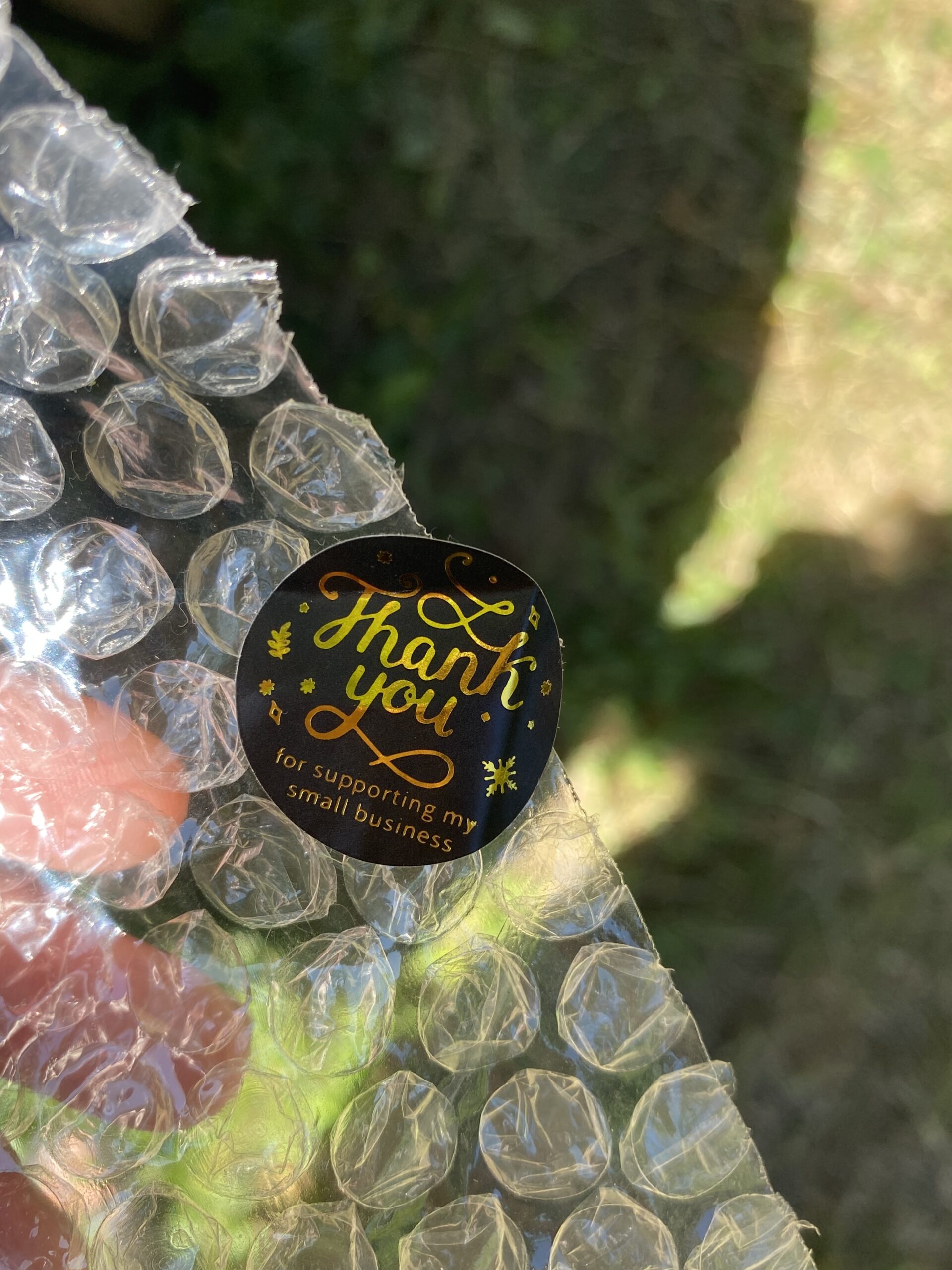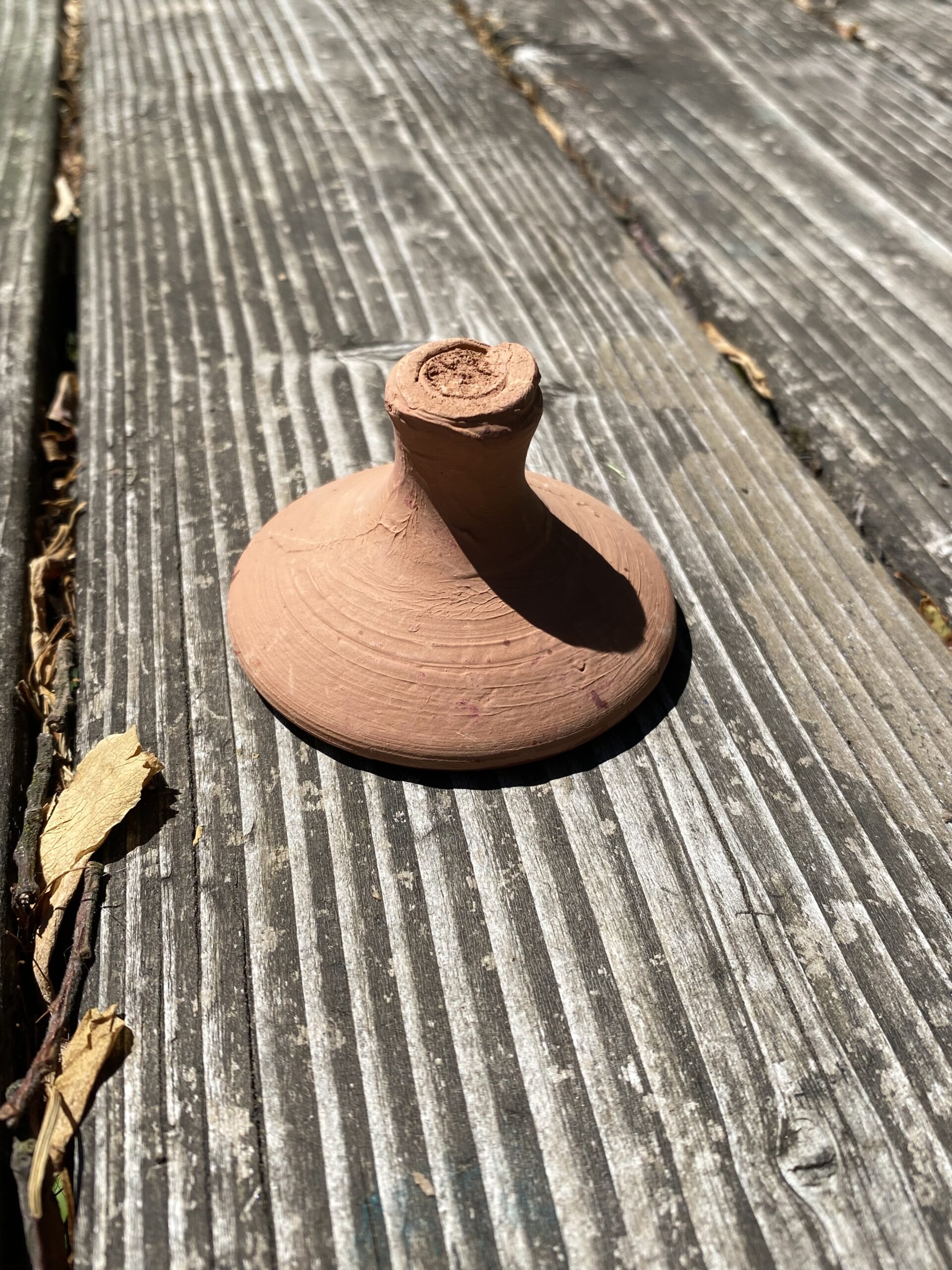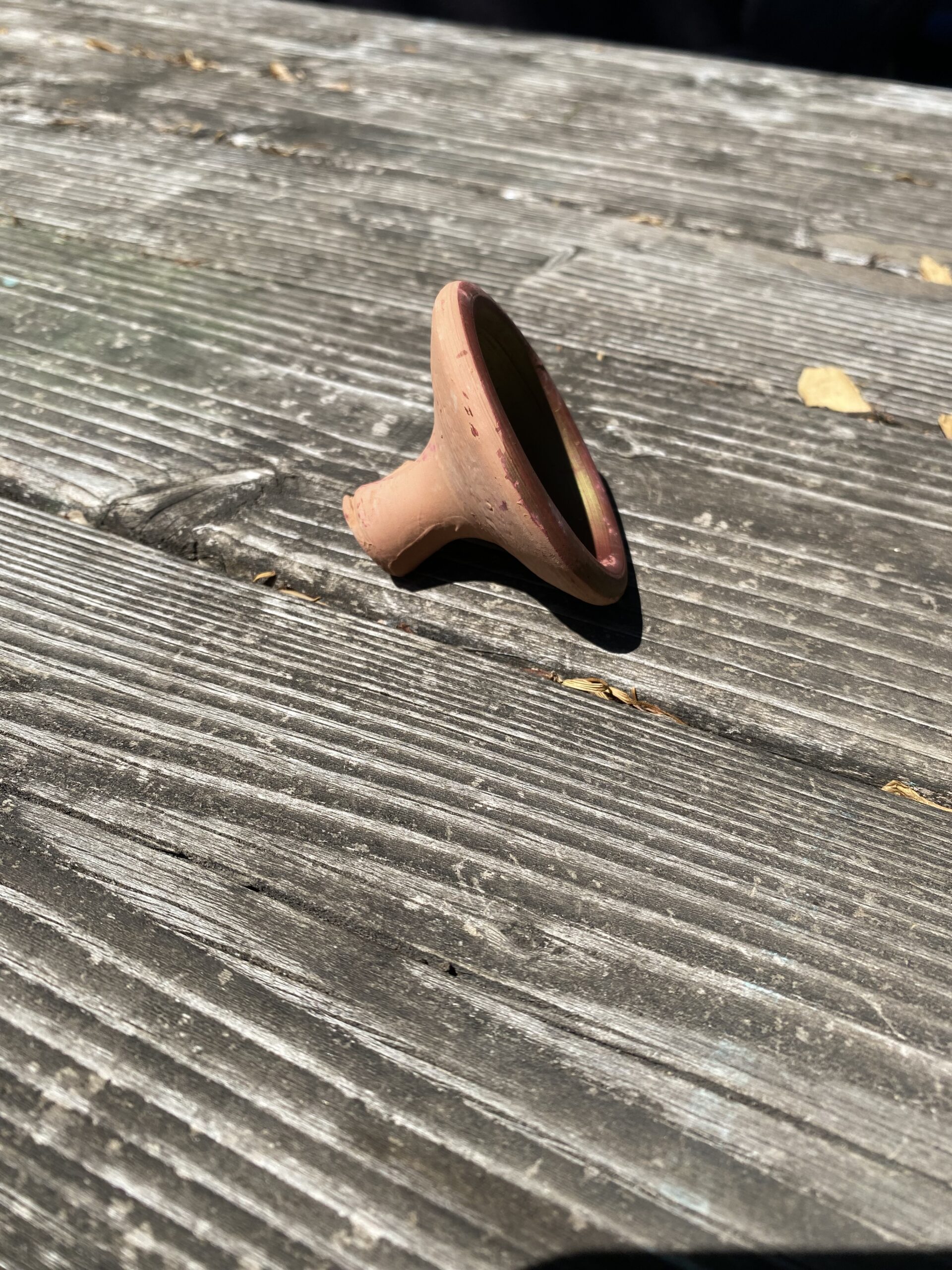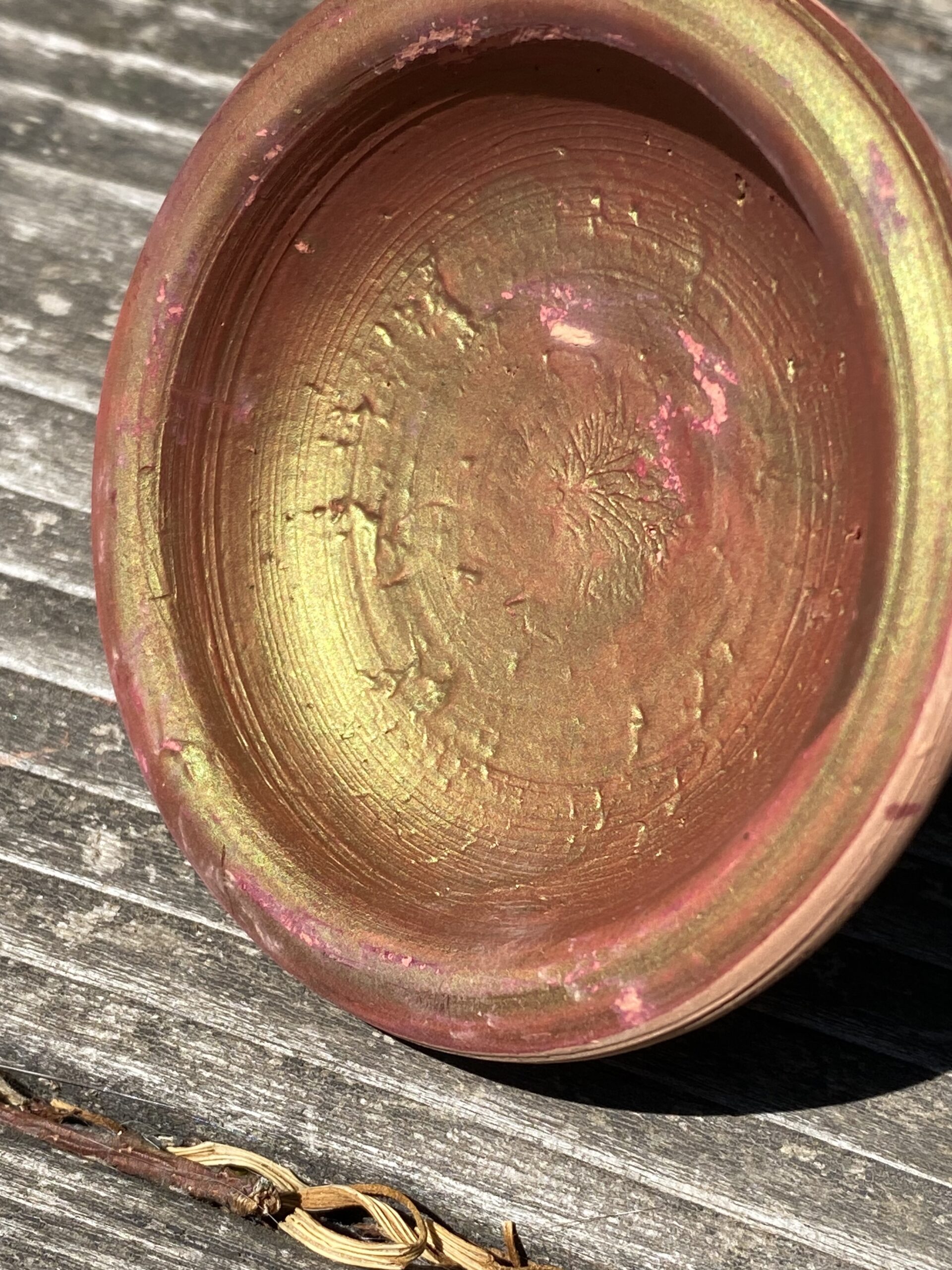Moroccan Aker Fassi Clay Pot Lipstick (Etsy) tests positive for UNSAFE (with intended use) levels of Lead (a potent neurotoxin), and Cadmium (a carcinogen)
For those new to the Lead Safe Mama website:
Tamara Rubin is a multiple-federal-award-winning independent advocate for childhood Lead poisoning prevention and consumer goods safety, and a documentary filmmaker. She is also a mother of Lead-poisoned children (two of her four sons were acutely Lead-poisoned in 2005).
- Tamara owns and runs Lead Safe Mama, LLC — a unique community collaborative woman-owned small business for childhood Lead poisoning prevention and consumer goods safety.
- Since July 2022, the work of Lead Safe Mama, LLC has been responsible for six product recalls (FDA and CPSC).
- All test results reported on this website are science-based, accurate, and replicable.
- Please check out our press page to see some of the news coverage of our work, linked here.
Published: July 13, 2023 — Thursday
These Moroccan ceramic lip stain pots are very popular right now and are being sold as a “natural” alternative to conventional makeup. The way they work: they are a bare, unfired (or low fire) piece of ceramic ostensibly with a dried poppy and pomegranate solution on it. You wet a brush or put a little water in the cup of the pot and then you move that around to release some of the “natural” pigment in/on the clay. Next, you smear that solution on your lips to stain them red. (Yikes! Bad idea all around!) Here’s a little video I found on YouTube of someone using one of these paint pots:
Given the levels of Lead and Cadmium found in the example pictured (which we purchased directly online from a vendor on Etsy with funds contributed by Lead Safe Mama readers), these are (as anticipated) likely NOT SAFE for use as intended. In the absence of independent, third-party testing of all brands and examples, from all vendors selling this type of product (especially in light of the nature of the materials found in this product, compounded by the fact that it is completely unregulated and being sold direct-to-consumer, shipped from vendors in Morocco), it is best to err on the side of caution and extrapolate that this concern is likely to be present for all versions of this type of product across the board without exception.
For context: the amount of Lead that is currently considered unsafe in lipstick is either 10 ppm or 20 ppm — depending on which regulation (in which country) you are using as a reference standard. Here’s the USFDA link with the info (of 20 ppm); here’s a link to an article from March 2023 (see screenshot below) that discusses Canada’s more-stringent standard (of 10 ppm), and a possibility that the U.S. might follow in lowering legal limits to match the now-10-year-old more protective Canadian regulation.
This product tested positive for 54 ppm Lead as well as 12 ppm Cadmium (a known carcinogen). See the full test results below.
Anyone who has been using one of these Moroccan pots for lip colorant should cease using it immediately and contact their doctor to ask for a Blood Lead Level test a.s.a.p. (or a hair or urine test for metals if their doctor advises it — more on that here). If this is YOU, please explain to your doctor that you have a suspected source of Lead exposure (through ingestion pathways —as the stain applied to your lips is, in essence, eaten). Given this context, the test should be covered by your insurance (in the United States). To learn more about Blood Lead Testing (prior to making the call to your doctor) click this link.
XRF test results for the dish (bowl) surface of the Moroccan paint pot pictured
60-second test (repeated multiple times to confirm results)
Note: the test results for Lead and Cadmium on the “makeup” side of the pot (test result set shown below) were significantly higher than the test results on the back side (handle) of the pot.
- Lead (Pb): 54 +/- 12 ppm (unsafe for use in makeup)
- Cadmium (Cd): 12 +/- 6 ppm
- Tin (Sn): non-detect / negative
- Mercury (Hg): non-detect / negative
- Selenium (Se): non-detect / negative
- Barium (Ba): 289 +/- 37 ppm
- Arsenic (As): non-detect / negative
- Chromium (Cr): non-detect / negative
- Antimony (Sb): non-detect / negative
- Copper (Cu): 108 +/- 33 ppm
- Nickel (Ni): non-detect / negative
- Zinc (Zn): 102 +/- 21 ppm
- Manganese (Mn): 1,156 +/- 200 ppm
- Iron (Fe): 51,100 +/- 1,200 ppm
- Platinum (Pt): 67 +/- 39 ppm
- Bismuth (Bi): 40 +/- 11 ppm
- Chlorine (Cl): non-detect / negative
- No other metals were detected in consumer goods mode.
Some additional reading that may be of interest
- More lipstick testing we have conducted
- More testing on other makeup products
- A link to the “Menu” for this website
~ End ~








Never Miss an Important Article Again!
Join our Email List











Given that aker fassi powder itself is just poppy and pomegranate bark powder, do you think it’s the clay pot itself which contains the heavy metals?
Though, this particular pot looks like it has other types of pigments than just poppy and pomegranate. It has the shine of mineral pigment. I’ve long suspected that the “mineral make up” is heavy metal contaminated. I used to use mineral make up (thinking it’s all natural, right?) until I recognized a correlation with horrible headaches when I used it.
I suppose in this instance it could even be BOTH the pot and the pigments which have heavy metals
I’m learning to appreciate my natural beauty rather than put who knows what on my skin. It’s a rare day that I use make up anymore.
The testing I did showed the highest levels of lead on the side of this object with the odd metallic sheen. The back side of the object (where you would not put a brush) did not have levels quite as high, but they were within a similar range (about 40 ppm.) Yeah – I stopped wearing makeup about a decade ago really. Now I don’t even wear any for special occasions.
Wow, shocking that people can still get away with this in 2023. Thank you Tamara for all the work you do!
I was doing my own research on this product(ans seeing the popularity on social media) and looking for reviews all over the internet. Thanks for this!
Thanks for this information. I just returned from Morocco and bought one for myself and my friend. I tried it two days ago and liked it but I woke up with a bad sore throat. I did go out that night so I thought I had caught a cold but then I remembered that I had tried it on for the first time. I only did research because I bought it from a spice store off the street and thought it might have germs. I didn’t expect to find out it’s toxic. Yikes!
I bought it a week ago, thinking it was an all-natural option since I have naturally dark lips and wanted to avoid anything that might worsen pigmentation. I chose it believing it contained only poppy and pomegranate, but I wanted to be sure it wouldn’t cause issues like dryness or further darkening. That’s when I found your website. I tried it for two days without any noticeable effects, but after reading your article, I’ve decided to stop using it. Glad I came across this in time! Thank you, Tamara.
Oh good! Glad you found this!
Hi have you tested any powder form instead of the clay pot? Thanks
Have you tested the powder form. And also the Nila powder